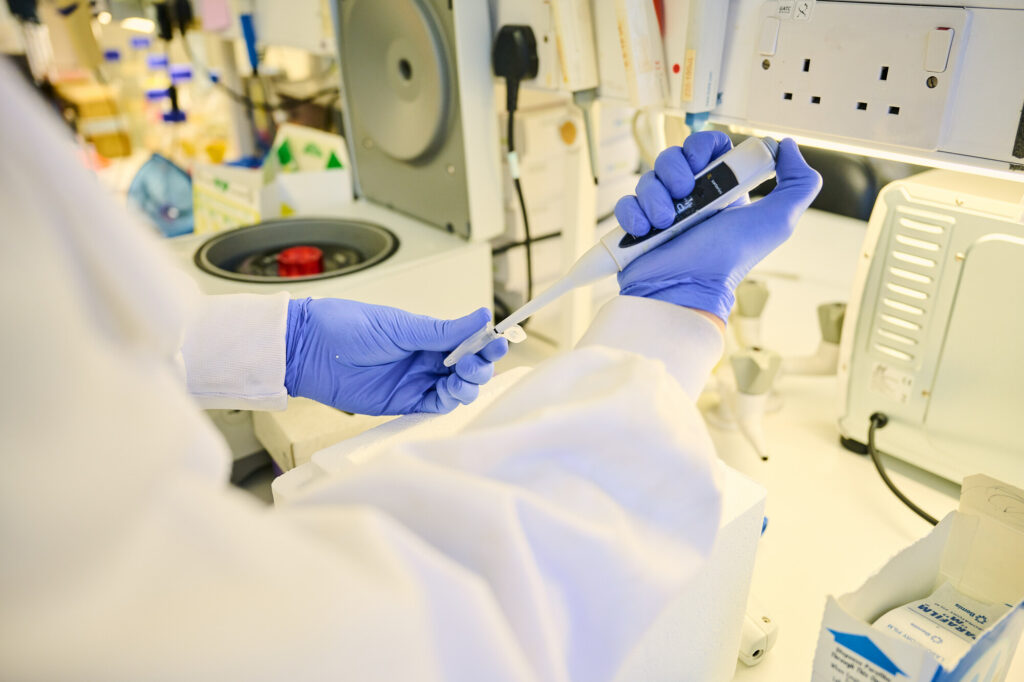We’re funding an exciting research project by Professor Haiyan Zhou and her research team at UCL in which they are exploring new ways to improve gene silencing therapy for Ullrich congenital muscular dystrophy – the most severe form of Collagen VI muscular dystrophy.
Targeted gene-silencing: a new solution for Collagen VI muscular dystrophy

A gene-specific link to Collagen VI muscular dystrophy
Every person has a unique genetic makeup, even though we all carry the same genes. Some of the differences in these genes are called alleles. Sometimes, alleles can change. This change can alter a gene and affect how it functions in our body.
Ullrich congenital muscular dystrophy is caused by a change in the COL6A3 gene. This change is dominant, meaning that only one copy of the changed gene is needed to cause the condition.
Exploring allele-silencing technology
Allele-silencing technology is a type of treatment that targets specific genes to ‘turn them off’. Think of it like switching off a particular light that’s too bright in your house, where the other normally functioning lights remain unaffected. In a similar way, this form of therapy can help stop or slow down the progression of conditions caused by changed genes without affecting unchanged genes. As such, it offers great potential in treating certain genetic conditions.
In this study Professor Haiyan Zhou and colleagues are exploring the allele-silencing technology, antisense Oligonucleotides (ASO), also called molecular patches, which aims to ‘turn off’, or silence, changed forms of the COL6A3 gene.
ASOs work a bit like plasters for genes, by attaching to gene sequences to turn them off. The most important part of designing ASOs is to make sure they can accurately identify the specific gene they are supposed to turn off. The more accurate an ASO is, the more likely it will be able to recognise, attach to, and turn off changed COL6A3 genes.
Professor Zhou and team have produced a few draft designs so far. While their first design was the most efficient, it was not very accurate, and the changed COL6A3 gene was not switched off. The next design was more successful, as it was able to identify, stick to, and turn off the changed COL6A3 gene. The researchers improved this design by changing its structure a little, which then increased the accuracy by almost 10 times.
Hope for the future
Overall, this work shows the great potential of allele-silencing treatment for Ullrich muscular dystrophy, the most severe form of Collagen VI muscular dystrophy. It provides a fantastic starting point for further research into the field of gene-based therapy that could greatly benefit people living with Ullrich congenital muscular dystrophy and similar genetic conditions.

